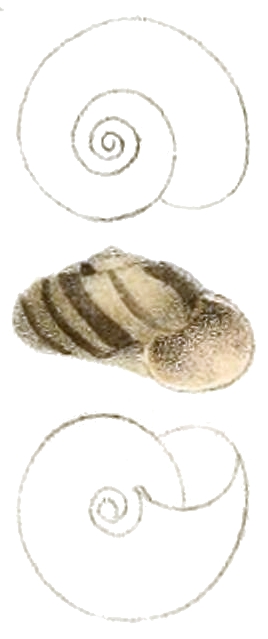Sinployea decorticata facts for kids
Quick facts for kids Sinployea decorticata |
|
|---|---|
 |
|
| Drawing of the shell of Sinployea decorticata. | |
| Conservation status | |
| Scientific classification | |
| Genus: |
Sinployea
|
| Species: |
decorticata
|
| Synonyms | |
|
|
The Sinployea decorticata was a tiny land snail that breathed air. It belonged to a group of animals called mollusks, which also includes clams and octopuses. This snail was a type of gastropod, like other snails and slugs.
This special snail lived only in the Cook Islands, meaning it was endemic to that area. Sadly, it is now extinct, which means there are no more of these snails left alive anywhere in the world.
What the Shell Looked Like
The Sinployea decorticata was first found and described by an American scientist named Andrew Garrett in 1872. He originally named it Pitys decorticata.
Garrett wrote down what the shell looked like. He said it was somewhat flat and round, like a disc, with a hole in the middle called an umbilicus. The shell was thin and a bit see-through, with a grayish color under a brownish outer layer. Older shells often lost this outer layer. Sometimes, the shells had reddish-brown lines.
The shell had curved ridges that were like small plates, running all the way around. It had about 5 whorls, which are the turns of the shell. These whorls slowly got bigger. The opening of the shell, called the aperture, was slanted and shaped like a round crescent moon.
The shell was quite small. It was about 4 millimeters (0.16 inches) wide and 2 millimeters (0.08 inches) tall.
The first shells that Garrett collected, known as the "type specimens," are kept safe at the Academy of Natural Sciences in Philadelphia.
Where it Lived
The place where the Sinployea decorticata was first found is called its type locality. For this snail, it was Rarotonga Island, which is part of the Cook Islands.
Its Home Environment
Andrew Garrett also wrote about where these snails lived. He said they were "a common species found on the ground in a mountain ravine." This means they liked to live on the ground in valleys found within mountains.


